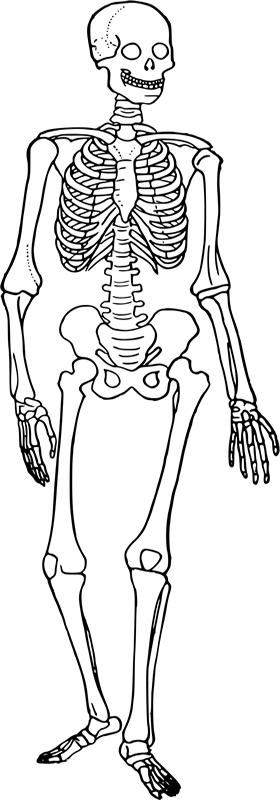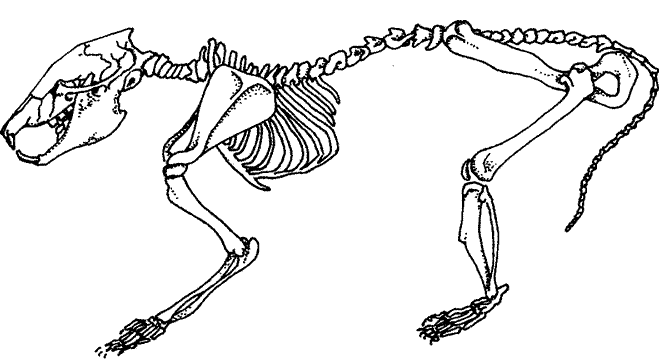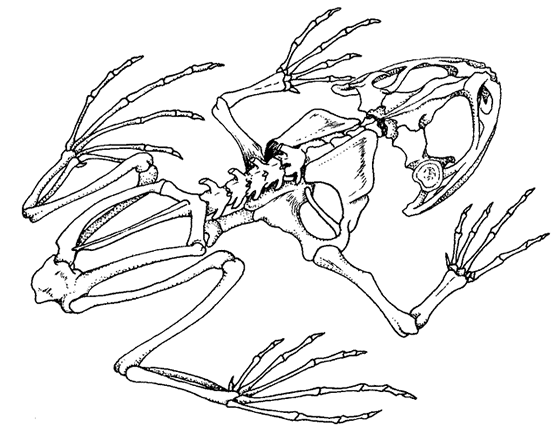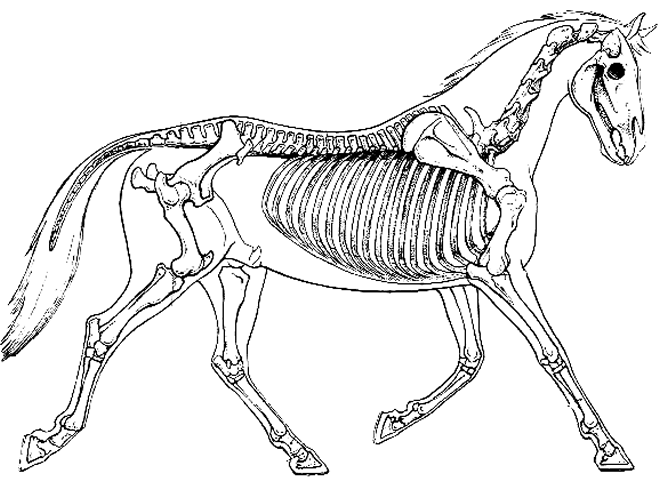Comparing the Skeletons of Vertebrates

All vertebrate skeletons follow the same basic body plan, the bones of each are considered to be homologous. The forelimbs have one large bone, the humerus, two small bones, the radius and ulna, tiny bones of the wrist called the carpals and then the digits.
This plan is repeated for other vertebrates, though differences are observed where animals have forelimbs adapted for different roles. For example, the forelimbs of bats have extremely long digits that support a membrane that serves as a wing. The forelimbs of hoofed mammals have digits that are fused together to form the hoof.
For each diagram below, color code each of the bones to match. The homologies will become apparent in the color patterns. You may need to reference outside sources to determine the locations of each of the bones.
Cranium (blue)
Clavicle (pink)
Sternum (pink)
Ribs (purple)
Scapula (red)
Pelvis (pink)
Sacrum (blue)
Vertebrae (dark blue)
Humerus (green)
Ulna (yellow)
Radius (orange)
Carpals (dark green)
Phalanges (pink)
Femur (red)
Tibia (yellow)
Fibula (black)
Tarsals (dark green)
Phalanges (pink)
Rat Skeleton

Frog Skeleton

Horse Skeleton

Related Resources
Practice Labeling the Human Skeleton
